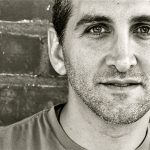End of Busy: A Deliberate Life vs. Reactive Life, with Jonathan Fields
By Leo Babauta
Every day, we get caught up in busyness - reacting to what comes at us, lost in the thousands of tasks and emails we have to deal with, and we are so busy dealing with all of it that we get stuck on autopilot.
What if we could get out of that trap, and live a more deliberate life?
This is what I recently talked about with my friend Jonathan Fields, who is releasing his new book today: How to Live a Good Life: Soulful Stories, Surprising Science and Practical Wisdom.
You can read Jonathan’s responses to some of my questions below, and watch us talk about mindfulness, uncertainty, and living a good life in this video:
Living a Deliberate Life
Leo: A lot of us get caught in the trap of busyness - reacting to what comes at us. And often it feels like a status symbol, being busy. But this busyness isn’t a part of the Good Life prescription, is it? Can you talk about why it’s a problem?
 Jonathan: Busyness has become a bit of a lightning rod. In one camp, we’ve got busyness as a status symbol of hustle and achievement (though, often it’s neither). In the other, we have busyness as a signpost of failure and surrender.
Jonathan: Busyness has become a bit of a lightning rod. In one camp, we’ve got busyness as a status symbol of hustle and achievement (though, often it’s neither). In the other, we have busyness as a signpost of failure and surrender.
Truth is, I’ve come to see busyness as more of a symptom of a bigger problem, rather than a cause. Being busy, alone, need not be a bad thing. What makes it good or bad is why we’re busy, what we’re busy with, and what we’re giving up along the way.
Being busy as a reaction to the compounding agendas others, to what they’ve chosen to heap into our lives, without considering whether any of it matters to us, that’s a problem. It drops us into a state of mindless autopilot busyness, reacting rather than responding. It leaves us watching our lives fill with unrelenting pace, screaming past us, without ever stopping to choose what matters, be present, cultivate meaning, joy, connection and vitality, and experience each moment through the lense of choice and presence. We end up busy without a cause, and it leaves us utterly gutted. Empty.
Being busy from a place of meaning and intention, though, that’s not necessarily a bad thing. If our days, weeks, months and life are populated by a stream of experiences, activities and people that keep us engaged much of every day, including things like moving our bodies, sitting in meditation, expressing our voices, engaging our strengths, deepening into service and meaning, working and playing with people we cannot get enough of, choosing only what truly lifts us up and matters deeply, we end up crafting a life of intention, joy, vitality and meaning. Are we busy along the way? Yes! But, that type of busyness leaves us full, not empty.
And, that adds to a life well lived.
Leo: You tell the story of a woman you had in mind while writing the book, a woman who is overwhelmed by a sense of busyness, who reacts to other people’s agendas, who realizes she’s living an “autopilot life.” How do we seem to slip into these autopilot lives? Jonathan: This is where it gets a little scary. The challenge is that we never really choose to live reactively. Instead, it just kind of happens. A little bit, every day. Until, one day, we wake up and realize, “my life is not my own.”
Think about it. Did you choose, “I will begin checking my email first thing before I get out of bed, and then respond to what everyone else says is important today?” Was there a moment where you said to yourself, “I will respond immediately, in real time to every email that hits my inbox, every to-do I’m tasked with and every status update on Facebook?”
Not likely, you just started doing it, and the technology that supports this behavior is the perfect intermittent reinforcement machine. In short order, it becomes habit. And, it all went down, bit by momentary bit, by surrendering to seemingly innocuous prompts that end up adding up to autopilot, reactive mindlessness.
There’s no blame here, it’s become the social norm to build a life this way. But, just because it’s the norm, doesn’t mean it’s good.
Question is, now that you know, what will you do moving forward? Choose with intention, or continue to surrender to a life of default reactive busyness, bundled with the annihilation of agency and intention?
Leo: What’s the alternative to the reactive, autopilot life of busyness that you recommend for a good life?
Jonathan: Awareness and intention. We need to break the cycle of mindless, reactive living and reclaim a sense of choice, agency and intention. We need to step back into the driver’s seat of our lives. To say, “I get to choose. My days, my years, my life belongs to me. Other people’s agendas, stories and will are not the primary driver of where I place my attention, my gifts, my love and energy.”
If we want to fill our days with activities, experiences and peoples, so be it. But, let’s start making those choices actively and proactively. Mindfully, from a place of filling our lives with connection, vitality and meaning. Not reactively, because we’ve never stopped to own the responsibility and the blessing of choice.
Leo: How do we start to move from autopilot to this direction? Jonathan: Step one, own that we’ve got a problem. Step two, begin to cultivate a daily awareness practice. For me, it’s a sitting mindfulness practice, bundled with daily prompts that keep me “dropping into” the moment. These train your brain to become increasingly more present and aware of what’s really happening in life.
One you become more mindful, you start to see the opportunities to swap intention for reactivity all around you, and you begin to choose choice, rather than succumb to pace and mindless surrender.
This is so important, it’s actually why I’ve devoted an entire chapter to it in my new book, and even created guided audio practices to help you begin the practice.
Leo: What might a day of awareness and intention look like, just so we can visualize what this might mean? Jonathan: This’ll be completely different for each person. It’s so important to honor the very real-world demands of your life, and not hold yourself to the opportunities and constraints of anyone else. But, here’s an example.
You wake and, wait for it, do not check your device. Not email. Not instagram. Not facebook or snapchat. Not even texts. Just lie in bed, place one hand over your heart, the other over your abdomen, eyes closed and breathe for a few moments. Note how you’re feeling as you enter the day. Calm, stressed, energized, fatigued, focus, distracted? No need to change it, just notice, and know that is going to play into the way you move through the day.
You roll quietly out of bed and find somewhere to sit comfortably, eyes half-closed, allowing your attention to rest on your breath for a brief, seated mindfulness practice. Anywhere from 3 to 30-minutes. From there, maybe you’ll close by setting an intention for the day. I always close my morning practice with a brief loving-kindness or “metta” incantation. This is how I’ll bring myself to the day. Then, you write down the single most important thing to accomplish, the one that actually is meaningful to you.
You head into the kitchen, grind some coffee and make a cup, or a pot if you’re brewing for more than one. As the coffee brews, you take single action, spend less than 30-seconds, that connects you with someone you care about. Maybe you text a friend to say, “just thinking about you and sending wishes for a great day.”
While you sit with your coffee, you know that the next few hours are your peak creative time, your window to get your most meaningful work done first. Especially, if it’s your most challenging work. But you also know that you need to get the “checking siren” out of your head, so you quickly spin through email and more. Still, you cap it at 5 minutes, and commit to only responding if there is true urgency. Everyone else can wait. This is your day, not theirs. They may be renting space in your device, but not your heart and head. You then come back to your computer and spend the rest of the morning creating, not consuming or managing.
Then comes a little movement break, just 10 or 15 minutes, because you know it’s good for your body and brain, followed by a lunch break. After lunch, you feel great, because you’ve already accomplished what matters most, so you settle into more of a managing and socializing and meeting mode. Catching up online, but still limiting time to 30-minutes and starting with the things that matter most. In the late afternoon, you walk-n-talk with your colleague or anyone else who wants your time, leaving your phone in your pocket the whole time, giving them your attention. Later in the day, you exercise for 40 minutes, then settle in to read or relax, spend time with friends and family and start to ease toward dinner together.
After dinner, more relaxation or creative time, and, if you need, catching up with any lingering tasks that really matter. Then you spend the evening in a wind-down mode, journaling a bit, reflecting on your day, how it went, how you feel, what you learned, what can bring into tomorrow, writing in gratitude, sharing conversation with an intimate partner, family or friends, and settling in to read, watch a movie or whatever else you enjoy.
Now, does this sound somewhat Utopian? Sure. But, many elements of it, on any given day, can become mindful anchors, moments that allow you to touch back down into your life. The idea is simply to make it yours. To keep finding ways to be present, mindful and focus your attention and actions on the people and activities that fill your Good Life Buckets, rather than empty them. Those will shift on any given day, too, so be open to the possibility of unforeseen experiences and the need to adapt on the fly.
 Leo: Thanks for the amazing info and inspiration, Jonathan! To everyone: I highly recommend checking out Jonathan’s new book, How to Live a Good Life: Soulful Stories, Surprising Science and Practical Wisdom.
Leo: Thanks for the amazing info and inspiration, Jonathan! To everyone: I highly recommend checking out Jonathan’s new book, How to Live a Good Life: Soulful Stories, Surprising Science and Practical Wisdom.